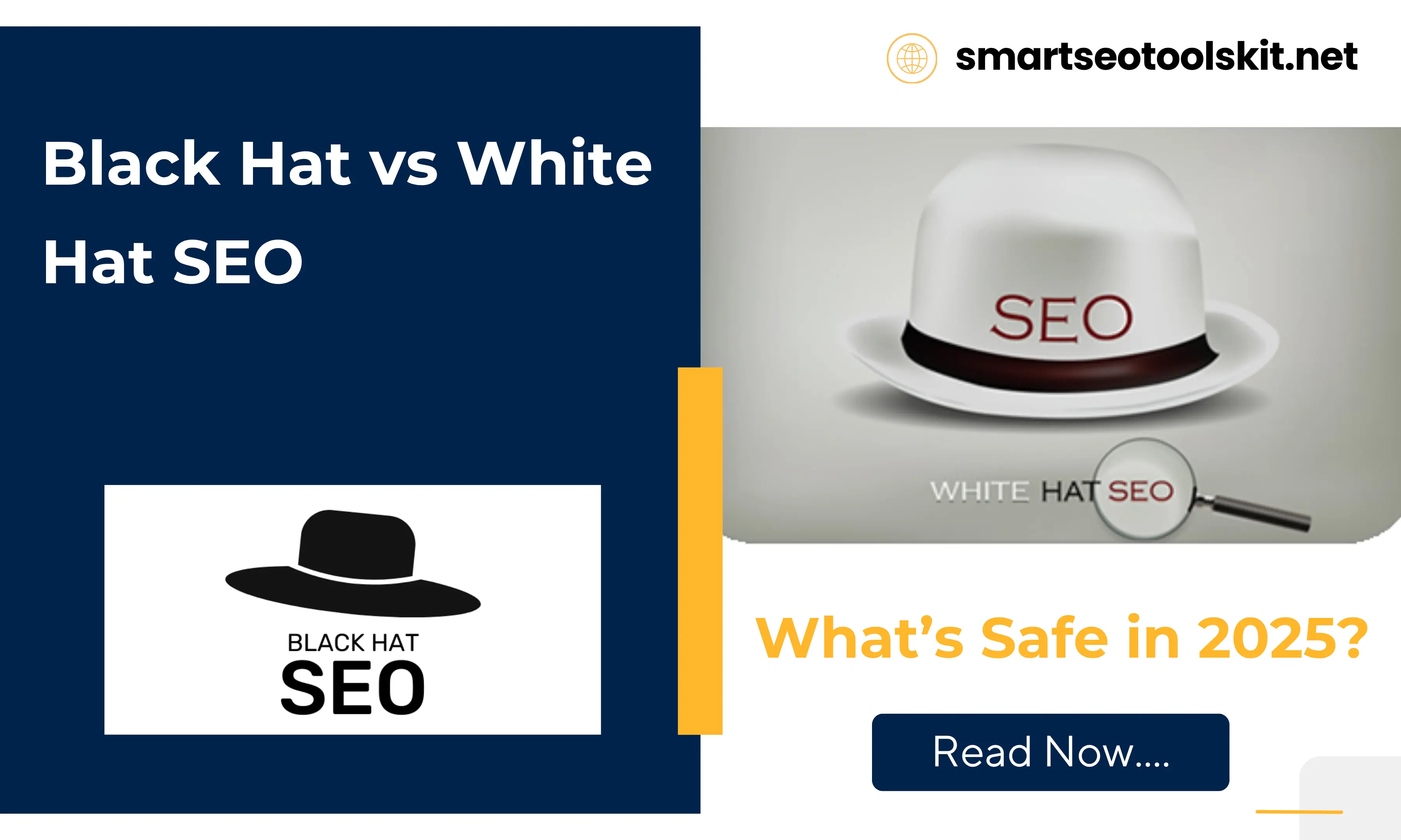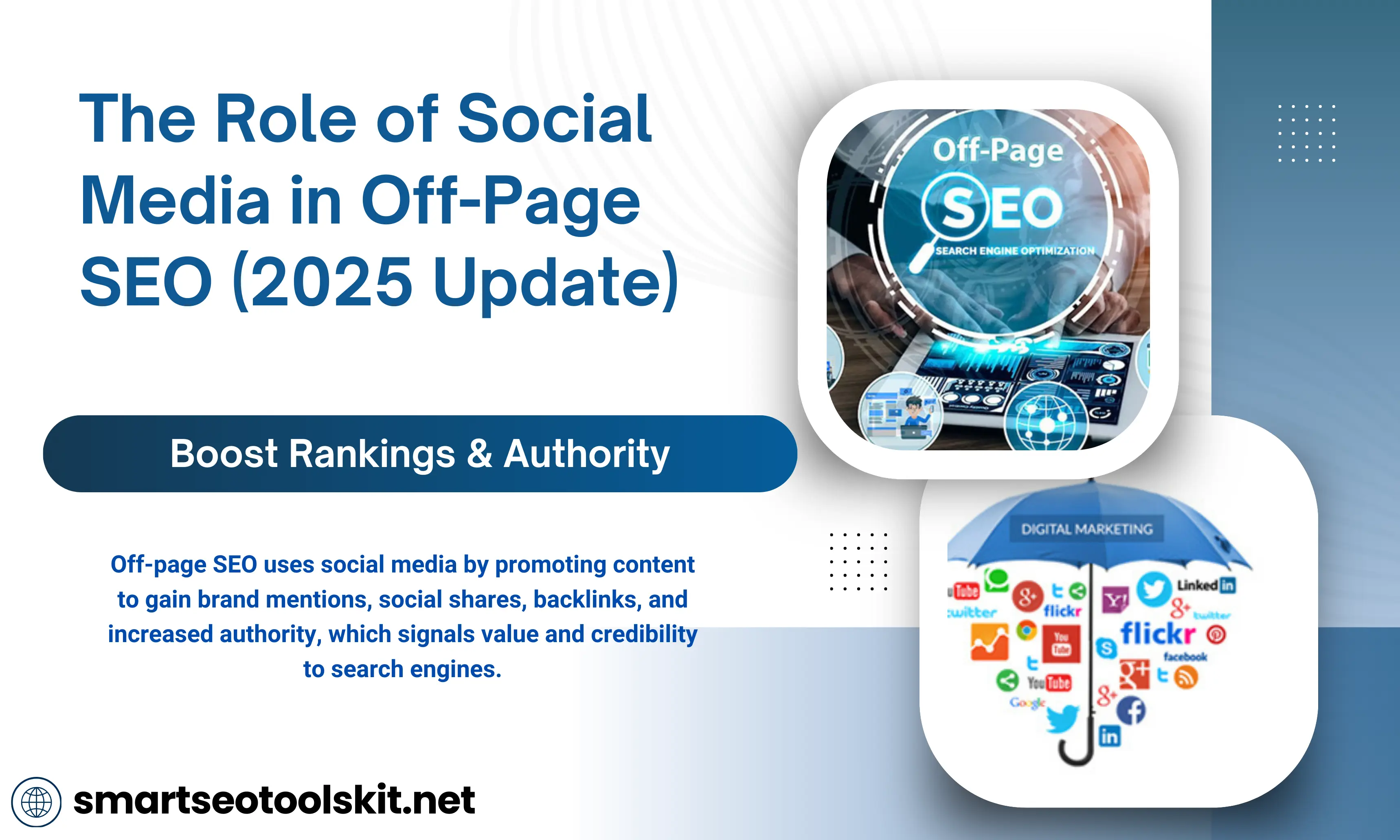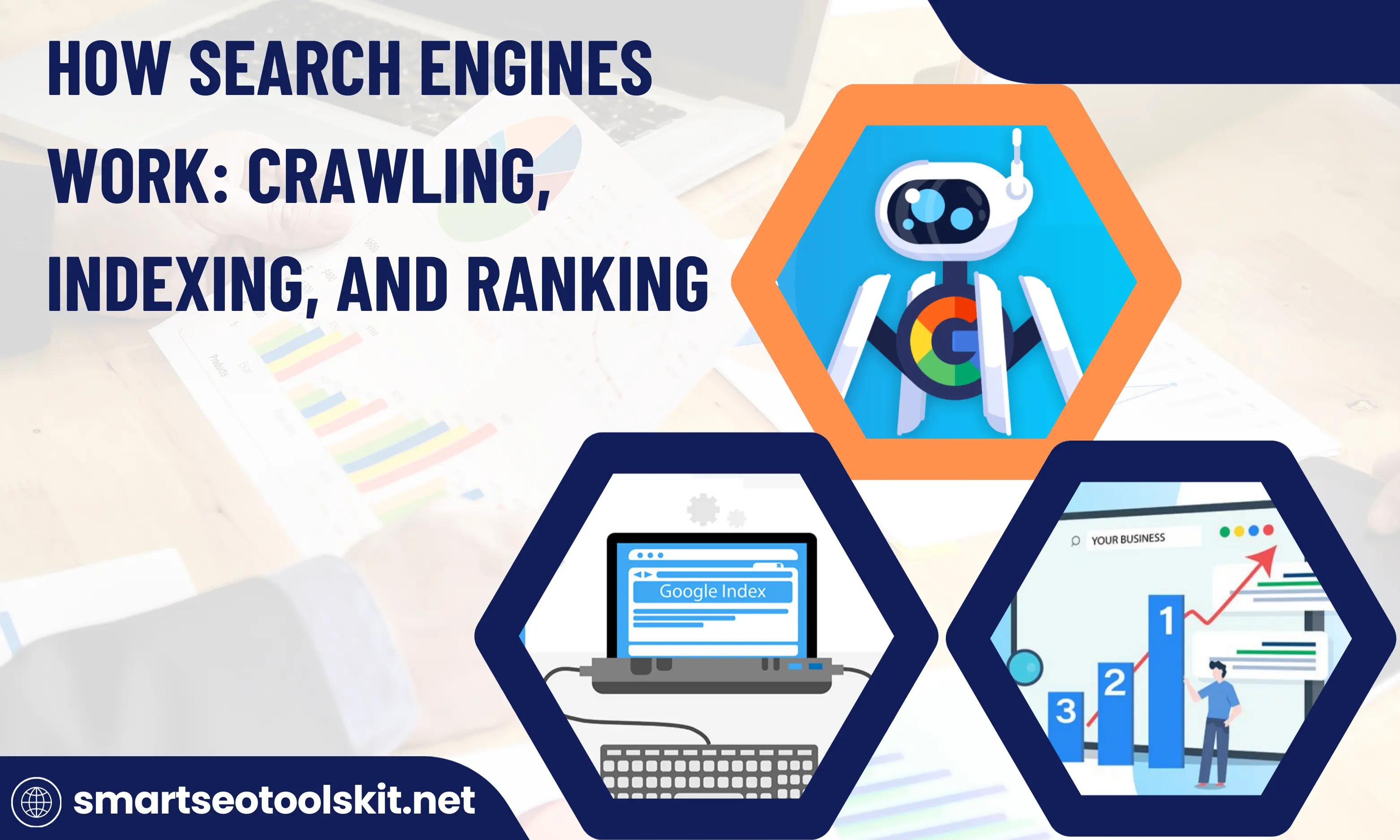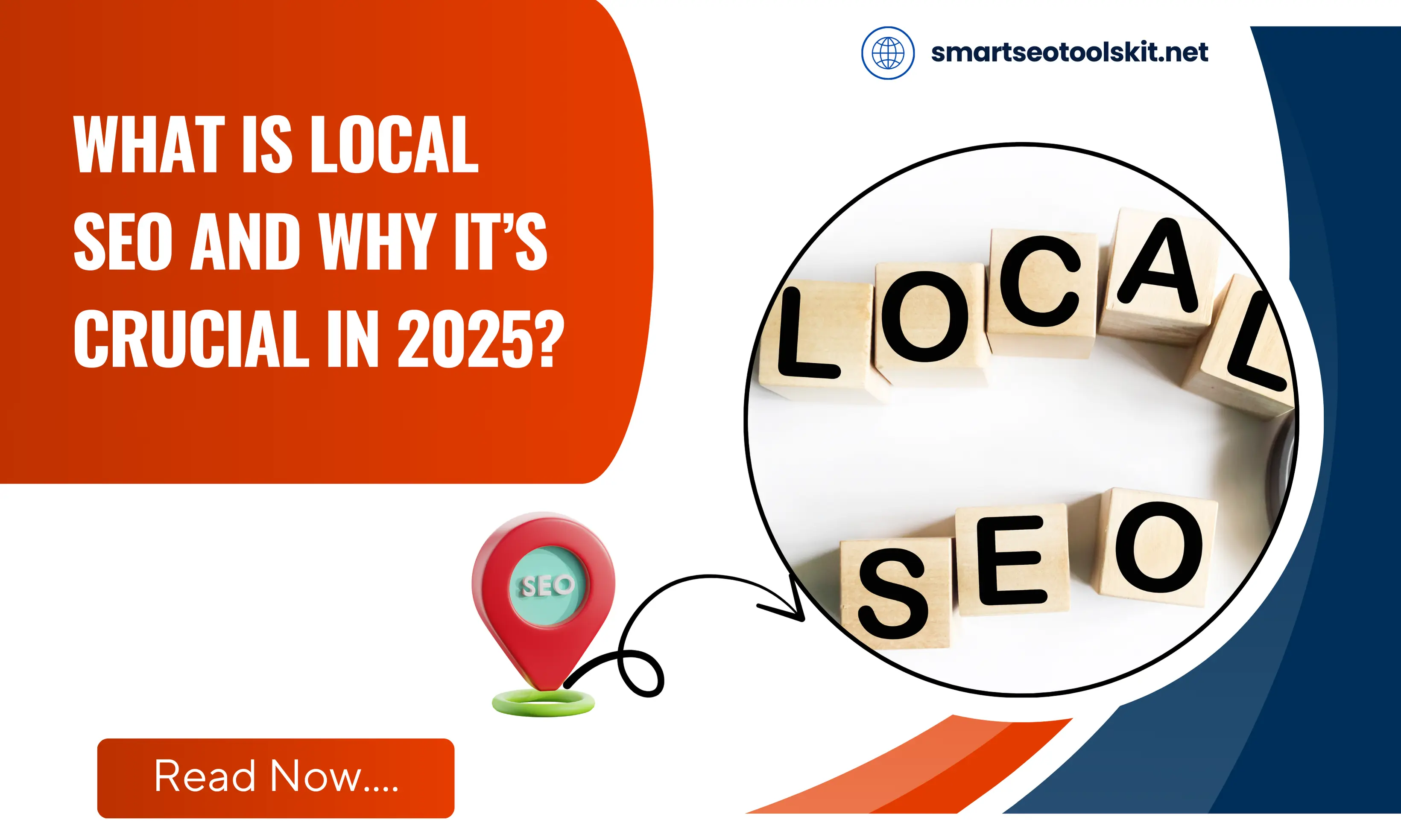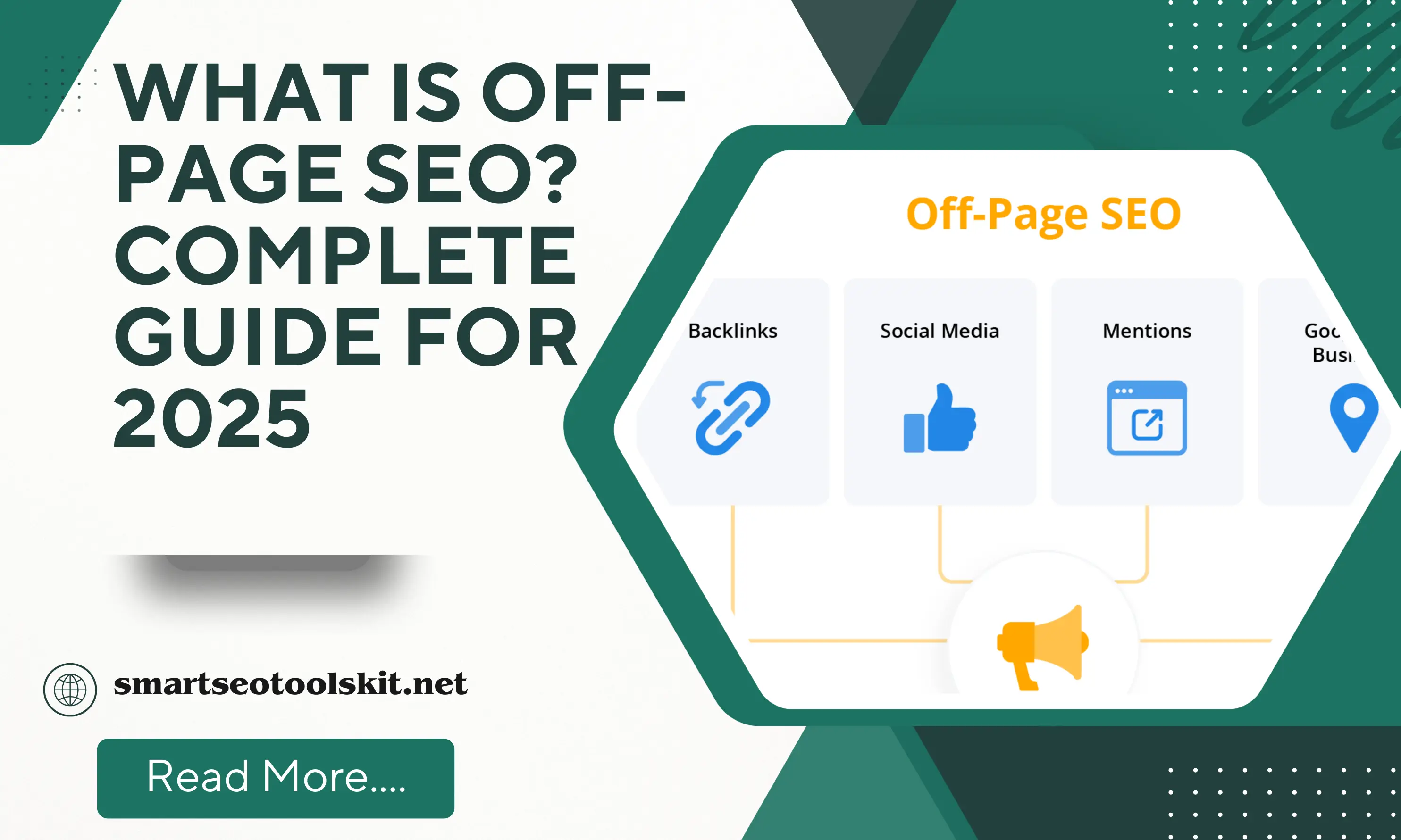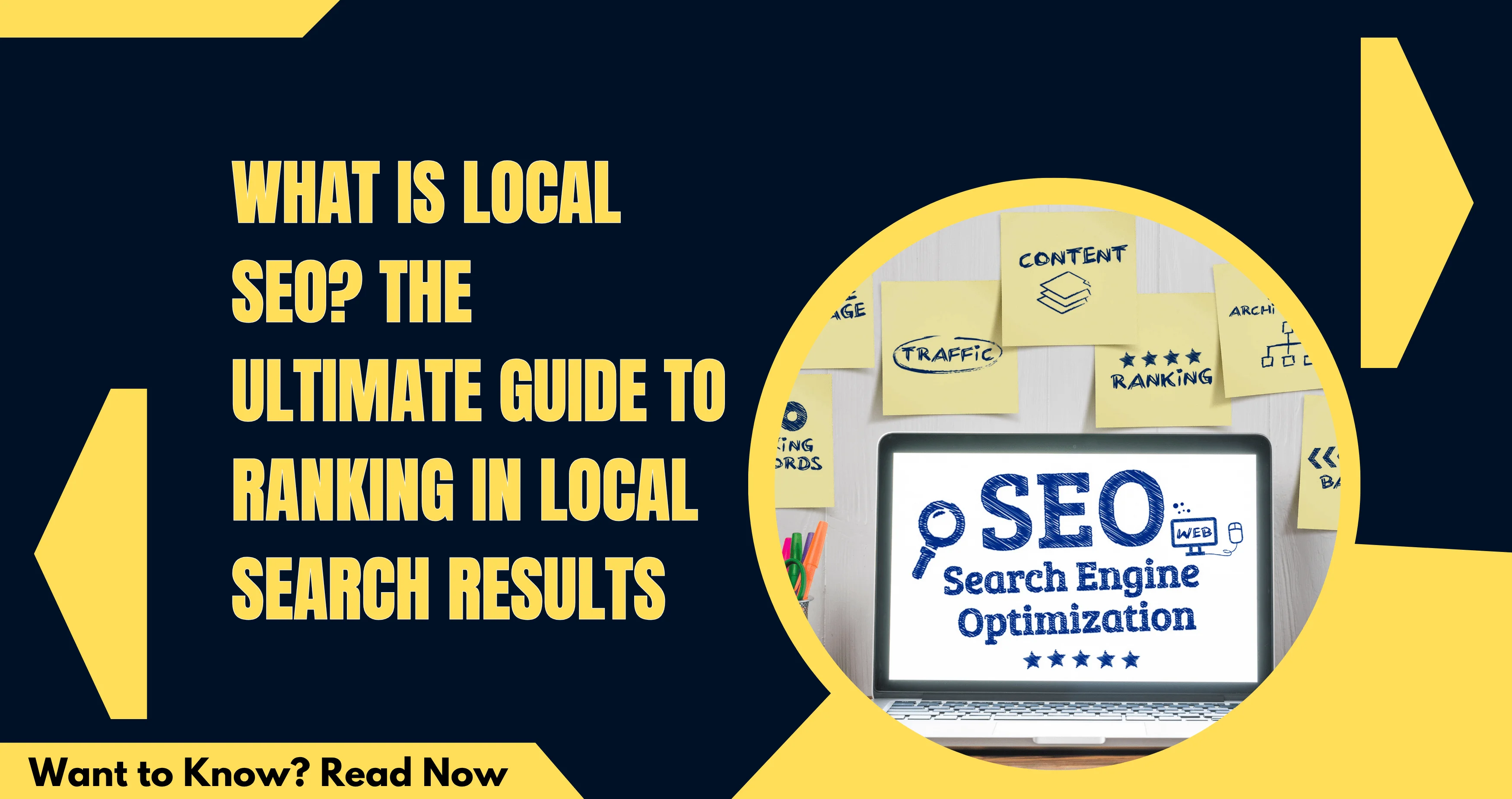Imagine you are starting an online business in 2025. You’ve built a sleek website, added products, and written helpful articles, but the traffic isn’t growing. You’ve heard people talk about black hat SEO and white hat SEO, but which one should you use? Which is safe? This article will help you understand the difference, risks, and safe ways to grow your site today.
In this guide, we’ll explore real-life examples, practical techniques, and simple strategies for both black hat and white hat SEO. By the end, you’ll know the best way to get sustainable traffic, avoid penalties, and make your website trustworthy in the eyes of both search engines and users.
Before starting the article, let’s first understand what Black Hat SEO and White Hat SEO actually mean.
What is Black Hat SEO?
Black hat SEO refers to tricks and shortcuts used to get higher rankings in search engines quickly. These methods try to manipulate Google or other search engines instead of helping real users. Examples include keyword stuffing, hidden links, cloaking, and buying backlinks. While black hat SEO can give fast results, it comes with high risks like penalties, de-indexing, or losing your site’s reputation.
What is White Hat SEO?
White hat SEO, on the other hand, focuses on following search engine rules and helping users. It uses safe strategies to improve rankings naturally over time. Techniques include writing helpful content, using keywords naturally, building genuine backlinks, improving site speed, and creating a positive user experience. White hat SEO is slower than black hat SEO but is safe, reliable, and builds trust with visitors.
Also Read: Why SEO Is Still Relevant in 2025 & More Important Than Ever
Why People Choose Black Hat SEO
Meet Vicky, a small business owner selling eco-friendly gadgets online. His website looked great, and his products were in demand, but nobody was finding his store. One day, he stumbled upon the black hat world online. Forums and articles promised “fast traffic” and “instant Google rankings” using black hat SEO techniques.
Vicky was tempted. The idea of quickly ranking higher in search results without waiting months seemed perfect. He saw examples like:
-
Keyword stuffing – adding “black hat in SEO” everywhere on his site.
-
Buying cheap backlinks from questionable websites.
-
Hiding links or text to trick search engines.
-
Cloaking – showing Google one page and visitors another.
Excited, Vicky implemented these tactics. Overnight, his traffic jumped. He felt like a genius. But this was only the beginning of his story.
Common Black Hat SEO Techniques in 2025
Even in 2025, some marketers still use black hat techniques because they promise fast results. Here’s what they include:
1. Keyword Stuffing
Keyword stuffing is when you cram a page with keywords unnaturally. For example, Vicky wrote his homepage like this:
"Buy the best eco gadgets. Our eco gadgets are top eco gadgets. Eco gadgets are eco-friendly gadgets that everyone loves."
Search engines today, powered by AI, recognize this immediately. It looks spammy, annoys readers, and can result in penalties.
2. Cloaking
Cloaking means showing different content to search engines and users. Vicky tried this by showing Google a page full of popular keywords while users saw a simple product page. While it worked briefly, modern algorithms detect this quickly.
3. Private Blog Networks (PBNs)
Some use networks of fake websites to create backlinks. Vicky purchased a black hat SEO service offering dozens of backlinks from random sites. Initially, it boosted rankings, but Google soon flagged the unnatural pattern, and traffic dropped drastically.
4. Hidden Text or Links
Some marketers hide text or links by making them the same color as the background. Vicky thought this was clever. But now, search engines can detect invisible content.
5. Duplicate Content
Copying content from other websites to create pages is still used by some. This can lead to penalties for plagiarism and lower rankings.
6. Misleading Titles and Meta Descriptions
Using clickbait to get people to click can increase clicks temporarily, but users quickly leave if the content doesn’t match. Bounce rates increase, and search engines notice this.
Also Read: 8 Common SEO Mistakes to Avoid in 2025 and How To Fix Them
Risks of Black Hat SEO in 2025
Vicky soon learned the dangers.
-
Penalties: Google can remove pages or the entire site from search results.
-
Loss of Reputation: Users leave and don’t trust the site.
-
Short-term Gains Only: Any traffic spike disappears once AI algorithms detect the tricks.
Even with professional black hat SEO services, the risks outweigh the benefits. In 2025, search engines are smarter than ever, and shortcuts rarely work safely.
Why White Hat SEO is Safe in 2025
Now meet Sanjana, another business owner with a similar store. Unlike Vicky, Sanjana chooses white hat SEO techniques. She focuses on helping users instead of tricking Google.
Sanjana’s approach included:
-
Writing high-quality, helpful content that her customers actually want.
-
Using keywords naturally, such as white hat search engine optimisation and seo whitehat.
-
Building genuine backlinks from trustworthy websites.
-
Optimizing site speed, mobile usability, and navigation.
At first, Sanjana didn’t see her website leap to the top of search results overnight. But over months, her traffic grew steadily. Users trusted her website, and search engines rewarded her ethical approach.
White Hat SEO Techniques That Work in 2025
Let’s break down the white hat SEO techniques that Sanjana used to grow her business safely.
1. Content Optimization
Instead of stuffing keywords, Sanjana wrote naturally. She integrated keywords like white hat search engine optimization in headlines, subheadings, and content where it made sense. Her blogs answered real customer questions.
Also Read: 6 Game-Changing Content Marketing Strategies You Can’t Ignore in 2025
2. Real Link Building
Sanjana earned links by guest posting on authority blogs, partnering with influencers, and creating content people wanted to share. These backlinks were natural and built her site’s credibility.
Also Read: 10 Advanced Link Building Strategies for 2025: Boost Your SEO & Rankings
3. Technical SEO
She fixed slow-loading pages, ensured her site was mobile-friendly, and structured content so Google could read it easily. This included meta tags, sitemaps, and error-free navigation.
Check Your Page Speed with this free tool: Page Speed Checker
4. User Experience (UX)
Sanjana focused on users. She made her site easy to navigate, mobile-friendly, and visually appealing. A positive experience keeps users on the site longer, improving rankings naturally.
5. Regular Updates
Sanjana updated content regularly to keep it relevant, adding new tips, products, or trends. Fresh content signals search engines that her site is active and useful.
Difference Between Black Hat and White Hat SEO in 2025
Here’s a simple comparison to show why white hat SEO is the safer choice today:
Even though the black hat world can look appealing, in 2025, white hat search engine optimization is the path to safe, long-term growth.
Why Some People Still Try Black Hat SEO
Despite the risks, some business owners still try black hat SEO services because:
-
They want quick traffic.
-
They feel pressure from competitors.
-
They don’t know the long-term consequences.
But in 2025, search engines are AI-driven. Shortcuts are no longer safe or reliable.
How to Switch From Black Hat to White Hat SEO
If you’ve tried black hat tactics before, don’t worry. You can recover by following these steps:
-
Remove Spammy Links: Audit backlinks and remove suspicious ones.
-
Rewrite Content: Replace keyword-stuffed or copied pages with helpful, original content.
-
Fix Technical Issues: Improve page speed, navigation, and mobile compatibility.
-
Follow Google Guidelines: Stick to white hat SEO techniques consistently.
-
Focus on Users: Make your site helpful, trustworthy, and easy to use.
Over time, search engines notice your improvements, and your rankings stabilize.
Also Read: How Search Engines Work: Crawling, Indexing & Ranking
Real-Life Case Studies
Black Hat Failure
A tech blog in 2025 used black hat in SEO. It saw a quick spike in traffic, but Google penalized the site, and traffic dropped 70% in a single month. The site had to rebuild credibility from scratch.
White Hat Success
A lifestyle website used white hat search engine optimisation and focused on useful content and genuine backlinks. Within a year, traffic grew by 200%, with high engagement and no penalties.
These examples show that while black hat SEO techniques can seem attractive, white hat SEO techniques provide sustainable results.
Expert Tips for SEO in 2025
Experts recommend:
-
Avoiding shortcuts from the black hat world.
-
Writing content for real people, not just Google.
-
Improving website speed and mobile experience.
-
Regularly checking your site for errors.
-
Using seo whitehat methods to earn trust and long-term growth.
Following these steps ensures your site is safe, credible, and visible in search engines.
Conclusion: White Hat SEO Wins Over Black Hat SEO in 2025
Vicky’s and Sanjana’s stories teach us an important lesson: in 2025, the best SEO is simple, ethical, and user-focused. Black hat SEO may give fast results but carries big risks. White hat SEO techniques build trust, credibility, and long-term growth.
Focus on white hat search engine optimization, avoid the shortcuts of the black hat world, and make your website helpful for users. This is the safest, most effective way to succeed online in 2025.
Frequently Asked Questions (FAQs)
Q1: Is white hat SEO better than black hat SEO?
Yes, white hat SEO is better than black hat SEO for long-term success. While black hat techniques might give quick results, they are risky and can lead to penalties or even removal from search results. White hat SEO focuses on creating helpful content, improving user experience, and following search engine rules, which builds trust and sustainable traffic over time.
Q2: Is black hat SEO still effective?
Black hat SEO might still bring short-term traffic, but it is not effective in the long run. Modern search engines, powered by AI, can detect manipulative tactics like keyword stuffing, cloaking, and fake backlinks. Using black hat SEO in 2025 can harm your site’s credibility and lead to penalties, making white hat SEO the safer and more reliable choice.
Q3: What is the difference between black hat and white hat SEO?
Black hat SEO uses tricks to boost search rankings quickly, like keyword stuffing, cloaking, and buying backlinks, but it can lead to penalties. White hat SEO focuses on safe techniques like quality content, natural keywords, and good user experience to grow traffic over time.
Q4: What are some common white hat SEO techniques?
White hat SEO techniques include creating helpful content, using keywords naturally, earning real backlinks, improving site speed and mobile usability, and updating content regularly to stay relevant.
Q5: Can black hat SEO help my website rank faster?
While black hat SEO may give short-term traffic gains, it is risky. Google and other search engines can penalize or remove your site entirely, making it a dangerous shortcut for long-term growth.
Related Tags :
.png)
